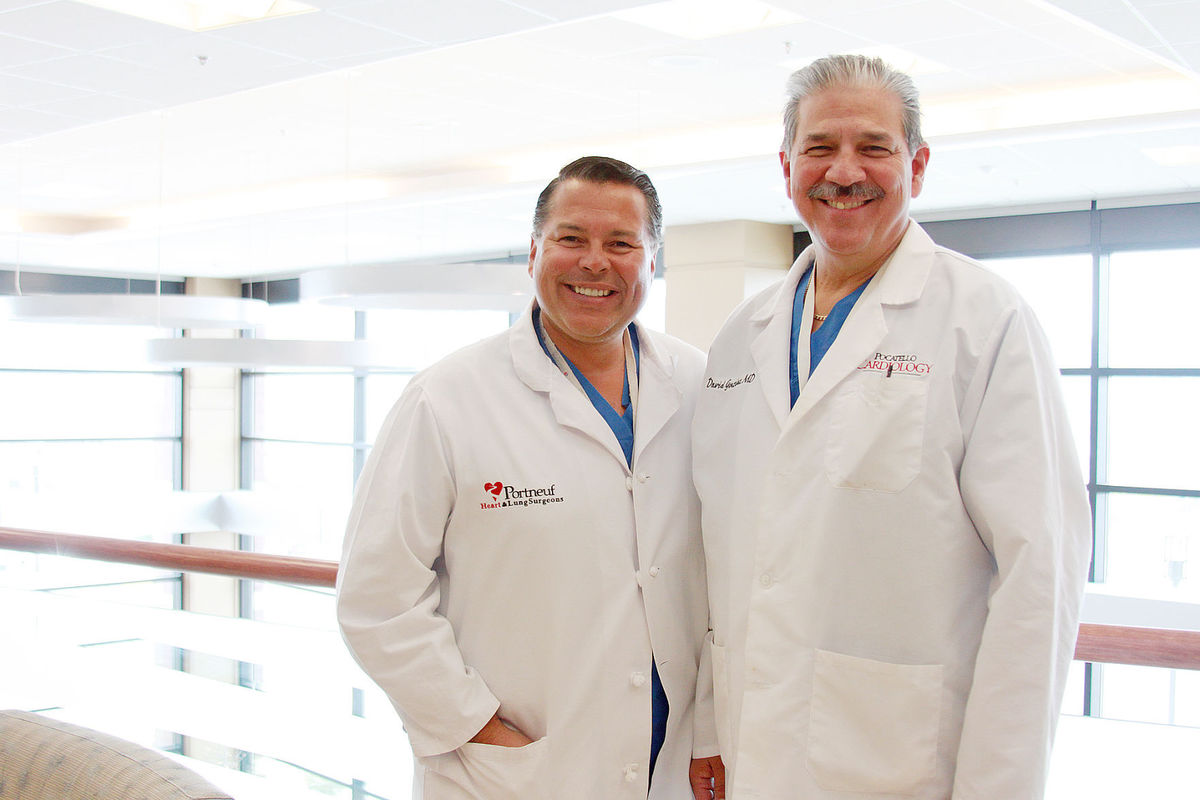Heart valve replacement procedure at Portneuf Medical Center continues to improve
Published at | Updated atPOCATELLO — Portneuf Medical Center was on the cutting edge when in 2013 Dr. Jacob DeLaRosa and Dr. David Gonzalez performed southeast Idaho’s first Transcatheter Aortic Valve Replacement surgery.
PMC made history when it became the smallest hospital in the United States to perform the operation. Now, nearly four years later, the procedure involves smaller instruments, and the surgery can be completed more efficiently.
That, however, does not mean less preparation. And DeLaRosa says that is why no serious complications have occurred during the procedure.
“It is because of preparation,” he said. “We meet and we talk about these patients. It’s totally a team effort. It isn’t one individual person. It’s a team effort to get these people to the next phase.”
The effort to bring Transcatheter Aortic Valve Replacement surgery to PMC began at DeLaRosa’s encouragement. He was aware of the procedure and the studies that affirmed its effectiveness. At the time, the procedure was only done at large, high-volume hospitals such as the University of Utah, Stanford University and the Mayo Clinic.
“This was Dr. DeLaRosa’s brainchild from the get-go,” Gonzalez said. “He had the foresight of having the hospital build what they call a hybrid room so facility-wise we had almost everything you needed to embrace a program like that.”
After getting 100 percent approval from the hospital, a team of about 26 people worked together to perform the hospital’s first Transcatheter Aortic Valve Replacement surgery on 76-year-old Floyd Gleed, of Malad, in July 2013.

Though over two dozen physicians cooperated in that first procedure, now it takes five to six to perform the surgery.
“It used to be, “You’re going to do job one. You’re going to do job two. You’re going to do job three,'” DeLaRosa said. “Now it’s, ‘You’re going to do job one, two and three.'”
He continued, “People can let their guard down (saying), ‘Oh this is getting easier and easier. As we’re moving into year four of doing this now, you always have to have that heightened sense of, ‘This next one something could go wrong.’ …These are very high risk cases that we do, and we’ve been fortunate that there have been no major complications coming out of the operating room.”
The procedure itself is done on folks who, over time, develop aortic stenosis. The ailment causes the aortic valve to keep from opening fully, and the valve goes from pliable and floppy to hard and stiff. When gone unchecked, the valve can shut completely, which leads to heart failure.
To correct the problem, the Transcatheter Aortic Valve Replacement surgery is done. The procedure involves running a catheter from the groin through an artery all the way up to the heart. The catheter is used to deploy a new valve.
Though preparing patients, mapping their arteries and going over safeguards in case something goes wrong can take up to a month, the procedure itself takes about a half hour. And because the surgery is minimally invasive, patients who were severely ill entering the hospital are able to walk out after just a few days of recovery.
“It’s pretty incredible,” Gonzalez said. “A lot of those folks are elderly and have already had their chest opened. They have a bad valve, and this technique is a way to fix it, and they can be out of the hospital sometimes in a day or two. It’s pretty amazing.”
This story was originally published in the Idaho State Journal. It is used here with permission.


